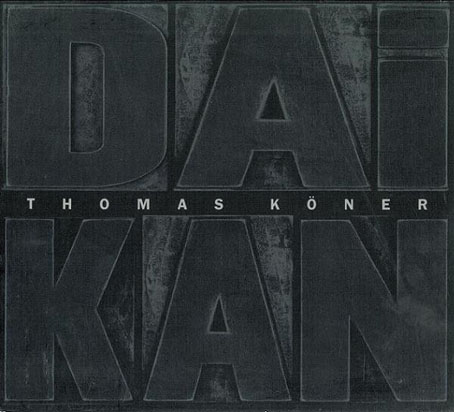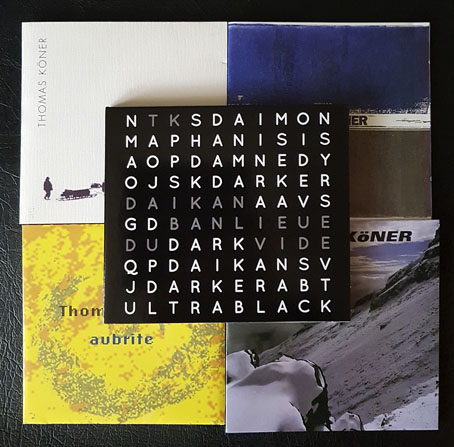Another week, another rare album reissued. Thomas Köner has long been a favourite musical artist round here, also an artist whose albums were often perilously easy to miss, being released in small quantities on minor Continental labels. I’d managed to buy almost all of his early albums before they vanished into deletion limbo but Daikan (2002) was one that evaded my grasp. Until this week I’ve had to satisfy myself with a CD-R of a friend’s copy.
“Daikan” is a Japanese word referring to the coldest time of the year, a title that situates the album among the many Köner recordings named after Arctic regions or climatic extremes. With the temperatures having plummeted again this week the arrival of the reissue is well-timed. The music is of that rarified type that most people would dispute being classed as music at all, a variety of electronic minimalism that tends to be labelled “Dark Ambient” although this wasn’t a common descriptor 20 years ago. The label fits, however, especially for this album. Köner’s signature sound is a sustained atmosphere that he once described as “grey noise”, a tone reminiscent of the muted traffic roar common to all modern cities. Sometimes a version of the sound is the entire substance of the piece, at other times it provides a substrate for similar sounds, as it does on Daikan which augments the roar with pulsing subterranean detonations and a bass drone that rises and falls throughout the 55 minutes of the composition.

Daikan is Köner’s darkest work, from the black woodblock letters of the original cover art to the sombre ambience of the music which is the closest he gets to the unyielding doom of an artist like Lustmord. Köner’s first two albums, Nunatak Gongamur (1990) and Teimo (1992) are frequently unnerving, thanks to the shrieking timbres he was extracting from gongs submerged in water, but Daikan is the album that plumbs the abyss for its entire duration. The piece was recorded live in Osnabrück at the European Media Art Festival in 2001, although you wouldn’t know it without being told, there’s no sense of an audience or venue. The original CD contained one long track but the reissue divides the piece into three sections, to ease its transference to vinyl, no doubt. The wax fetishists must be appeased. The reissue also includes an extra track, Banlieue Du Vide, the audio component from one of Köner’s installations. This is nice to have but its busy urban soundscape doesn’t fit with the rest of the album, it seems to be there to help fill out the four sides of the double-vinyl format. Köner’s new cover design acknowledges the tenebrous nature of the music in those extraneous portions of text: “Daimon”, “Damned”, “Darker”, “Dark”, “Ultrablack”; a rare example of what you might call editorial comment. Most of his albums offer no clues to connect the music to a world outside the recordings apart from the artwork—which is often abstract—and the mysterious titles—remote locations, foreign words related to winter—which in pre-internet days remained enigmatic.
Köner’s albums since Daikan have been lighter in tone and presentation, with an emphasis on field recordings. I prefer the early works, inevitably, which brings us once again to that contradictory impulse whereby you wouldn’t want to prevent an artist from evolving yet wish they might have continued exploring a particular direction for a longer period of time. My solution to this is to give the works you value greater attention; in the case of Thomas Köner this means venturing deeper into frozen expanses that many listeners would happily avoid. Daikan isn’t a suitable destination for everyone but it offers rewarding territory for intrepid sonic explorers.
Previously on { feuilleton }
• Drone month
• A playlist for Halloween: Drones and atmospheres
• Thomas Köner

